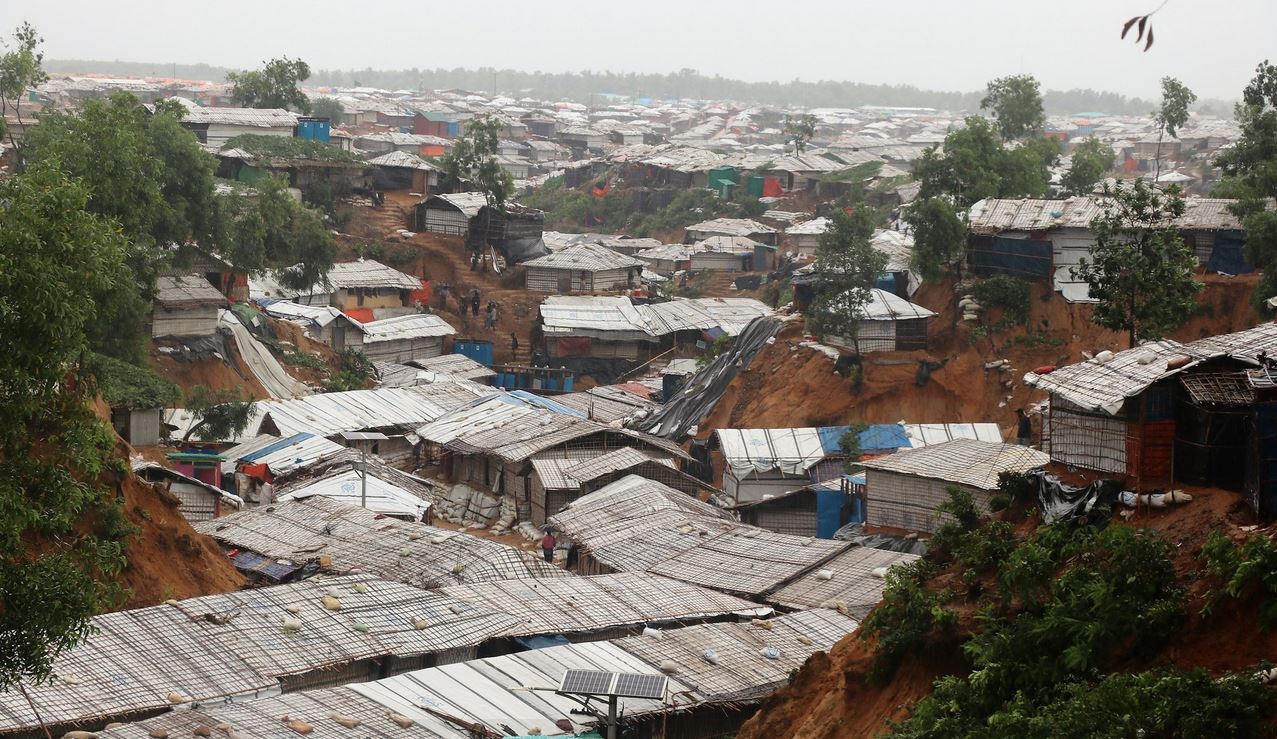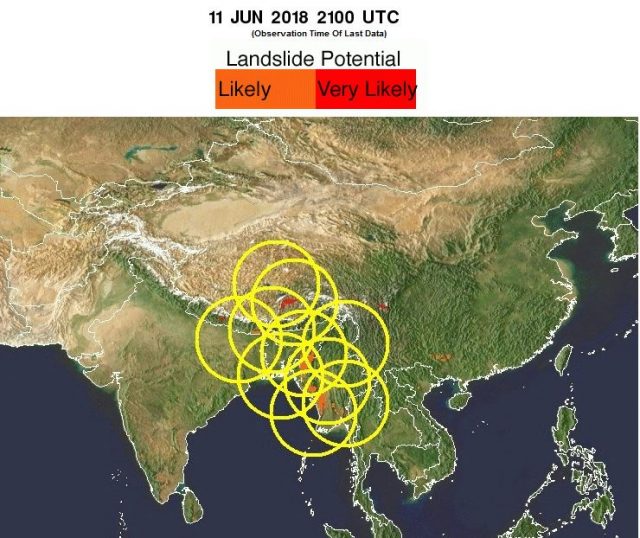12 June 2018
The Rohingya refugees: landslides start to take lives as the monsoon arrives
Posted by Dave Petley
The Rohinghya refugees: landslides start to take lives as the monsoon arrives
For the last few months there has been increasing concern about the plight of many of the Rohingya refugees who have been forced out of Burma – Myanmar – by the military, and are now living in makeshift camps in Bangladesh. The numbers are vast – some estimates suggest over 700,000 people. There is particular concern about the camps at Kutupalong and the surrounding areas, which are thought to have a population that exceeds 500,000 people. The camps have been built on hilly, forested land that is highly susceptible to landslides. The trees have been felled to create space for the camps, and the makeshift accommodation has been built on and at foot of the slopes. Conditions are dire. CNN reports that Caroline Gluck, the spokesperson for the UNHCR, described the situation as:
“People are practically living on sandcastles”
The monsoon season has now arrived in Bangladesh. CNN also reports the first fatality of the rains (though not the first landslide fatality in the refugees camps this year):
“Around 2.30 a.m. Monday morning a mud wall in a shelter in the Kutupalong camp collapsed, killing a 3-year-old boy and injuring his mother”
Yesterday Nafeesa S tweeted a set of photographs of the conditions in the camps. For example, this image shows the weak state of the soil and the potential for collapse:

The weak soil at the Rohingya camps in Bangladesh. Image tweeted by Nafeesa S
.
Whilst this image shows the houses built on deforested, weak slopes in the refugee camps:-

Houses built on weak unstable slopes in the Rohingya camps, in Bangladesh. Image tweeted by Nafeesa S
.
As of yesterday 21 landslides have been reported Over the next few days heavy rains are expected in Bangladesh. News reports this morning suggest that 13 people were killed by landslides overnight, although it is unclear as to whether these are refugees or the local population (who are also very vulnerable to landslides). The NASA TRMM model for landslide susceptibility highlights this area as being at risk at present:

NASA TRMM model of real time landslide susceptibility, highlighting the high levels of hazard in the areas occupied by the Rohingya refugees at present.
.
The situation over the next few days is likely to be dire.


 Dave Petley is the Vice-Chancellor of the University of Hull in the United Kingdom. His blog provides commentary and analysis of landslide events occurring worldwide, including the landslides themselves, latest research, and conferences and meetings.
Dave Petley is the Vice-Chancellor of the University of Hull in the United Kingdom. His blog provides commentary and analysis of landslide events occurring worldwide, including the landslides themselves, latest research, and conferences and meetings.
Dave,
do you know what the geology underlying the camps is? The topography is somewhat unusual in that it comprises a set of relatively uniform low rounded hills and shallow valleys, with no obvious lithologic control on the drainage pattern, all apparently underlain by a highly erodible substrate. Ancient dunes? some form of a saprolite?
IAEG_Bangladesh National Group is ready to work with all concerned authorities to evaluate landslide hazards of Rohingya Refugee camps of Bangladesh. Monitoring, modelling and societal aspects of these hazards are now evaluating by some post graduate students of the engineering geology & geohazards group of Jahangirnagar University, Bangladesh.If there is any scope to involve with the rainfall induced landslide hazards of teknaf, Bangladesh PLease let us know.
Can’t they relocate?